The artist who drew his wife on her deathbed
- Published
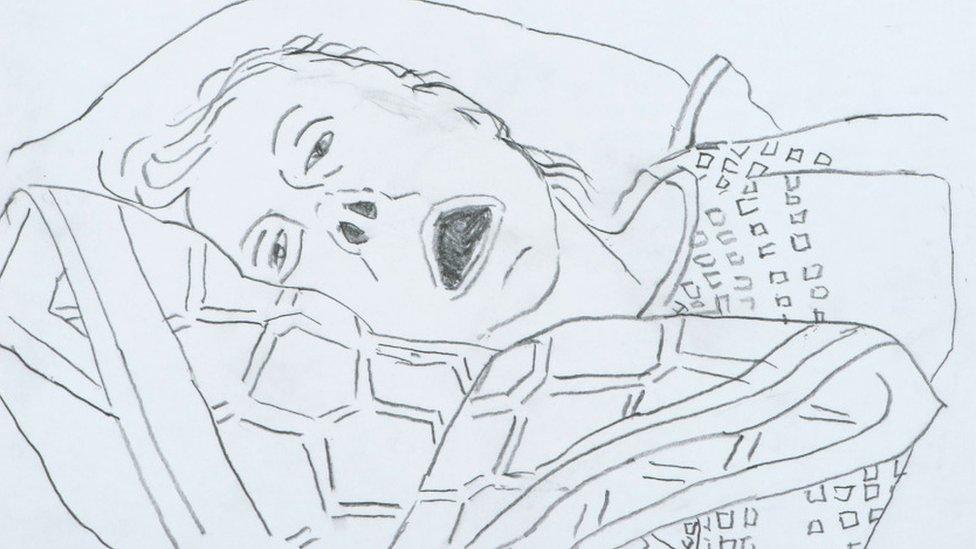
Norman Gilbert drew his wife Pat in hospital after she suffered a stroke
When Norman Gilbert's wife of 65 years suffered a stroke, the artist sat at her bedside in hospital for a week and did what he does best - he sketched.
The 91-year-old has always included his family in his work and his wife Pat had featured in his paintings since they met at Glasgow School of Art in the 1940s.

Norman Gilbert was married to Pat for 65 years
Pat died in August 2016, two hours after their wedding anniversary.
She had been suffering from Alzheimer's disease for a number of years and Norman cared for her until she had a severe stroke and was taken to the Queen Elizabeth University Hospital in Glasgow.
"I stayed with her awake the whole night," Norman says.
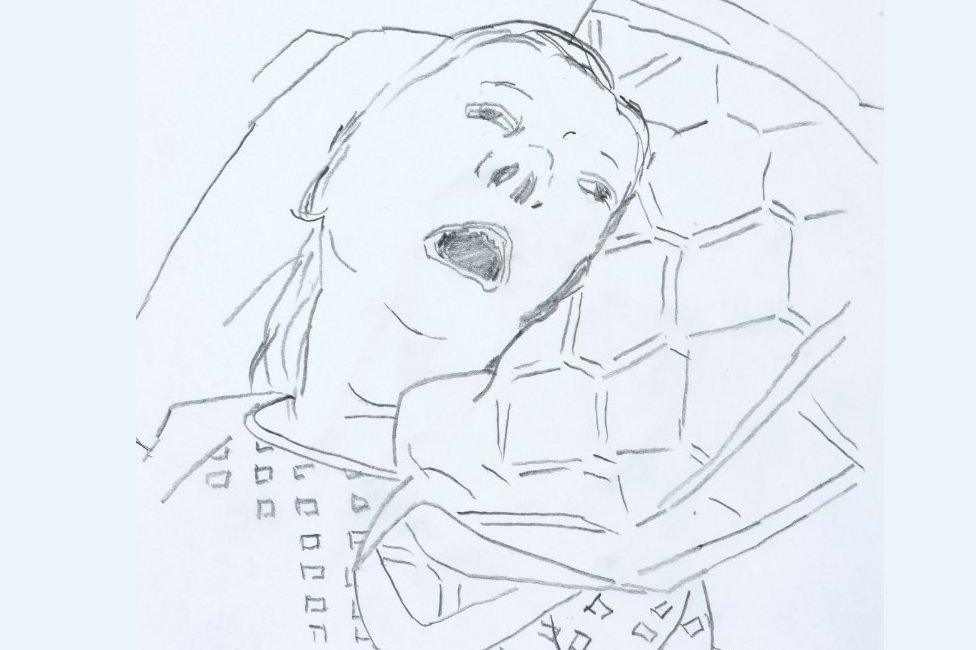
Norman says he has no regrets about the drawings
"I didn't think she would last the first night but she did and I was told this could go on for days."
Norman says he slept at home on the second night but after that he had a chair set up in the hospital room so he could be with Pat at all times.
"After I had been there for two or three days I thought it would give me something to do if I took my sketch book and drew her," he says.
"One of the doctors came in and saw that I was drawing and I said 'it's alright, it keeps me sane and she wouldn't mind, I'm sure'."

Pat featured in Norman's work for six decades - this painting is from 2014
Norman says he does not know if Pat was aware of what he was doing.
He says: "For the first two days if I squeezed her hand she squeezed it back and then she stopped doing that so I don't know how much she was aware of, but I did keep talking to her."
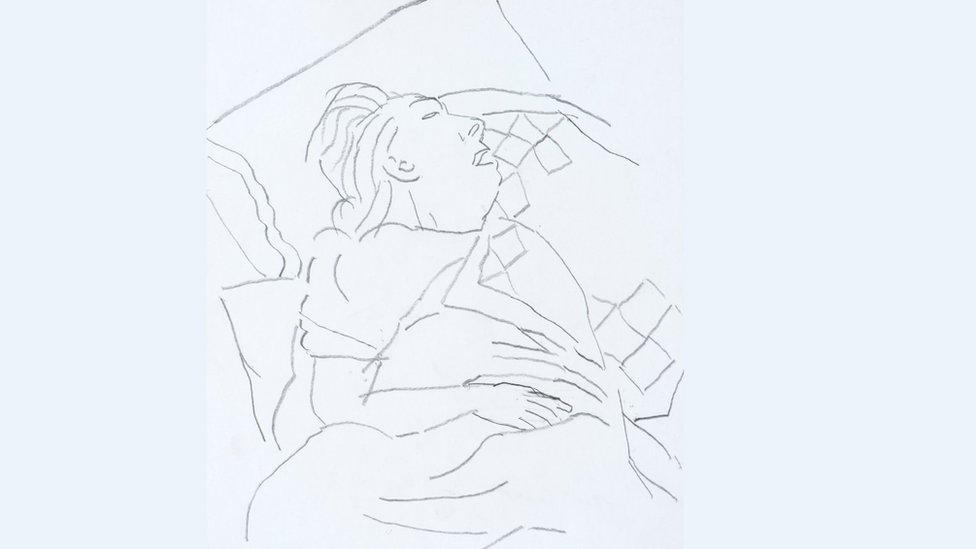
Norman made 30 sketches of his wife while he was by her bedside
The artist says he completed about 30 drawings and in "five or six of them I think I have caught something".
The resulting sketches are simple, honest and enormously moving, familiar to anyone who has been at the bedside of a loved one in their final days.
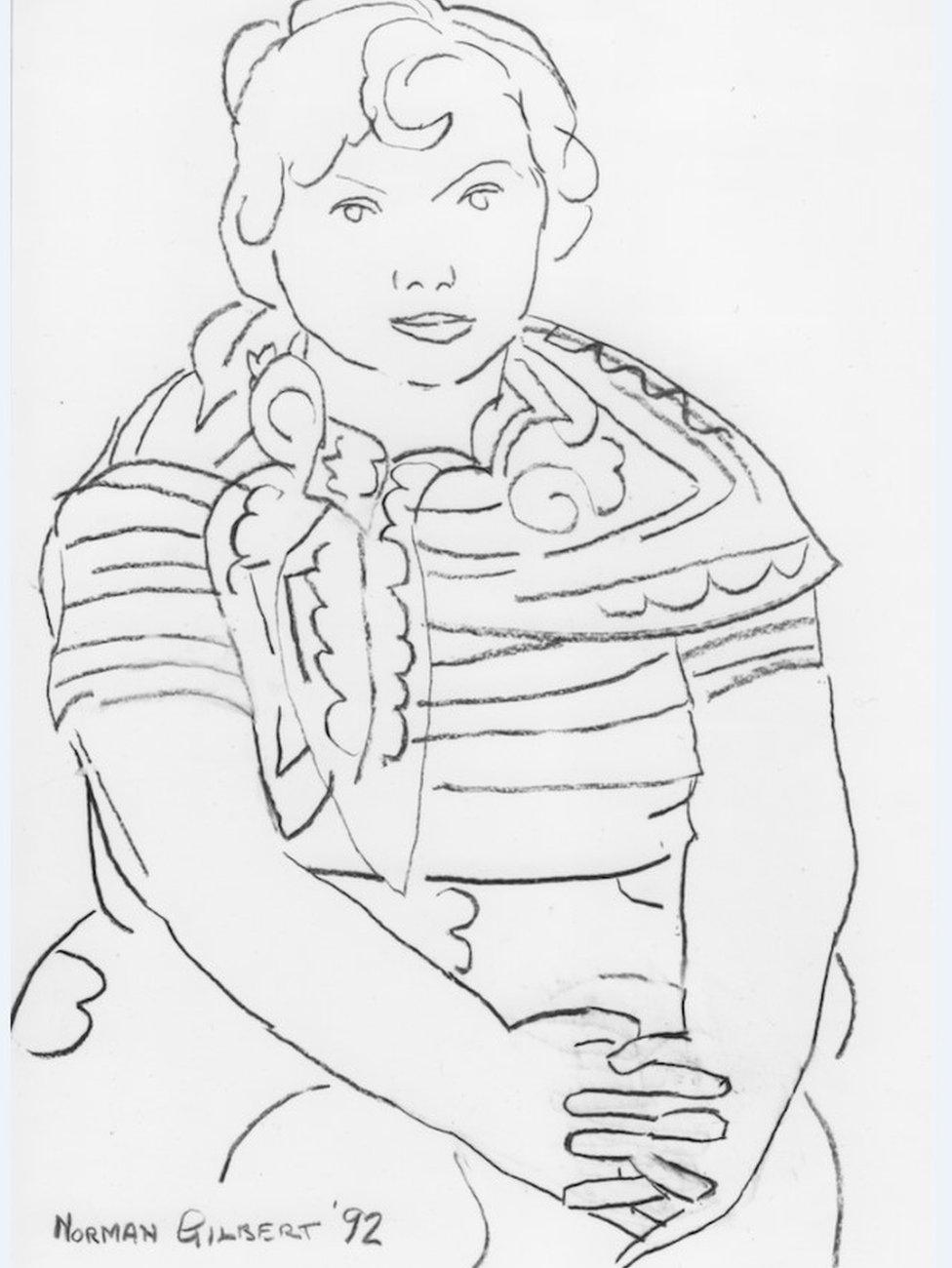
This sketch of Pat dates from 1992
"I have no regrets about doing the drawings," says Norman.
"I love having them and I cherish them."
As well as helping Norman, the sketches were important to his four sons, two of whom are based in North America and could not be at their mother's bedside for the whole time.
Dr Mark Gilbert is the youngest son and is also an artist, based at Dalhousie University in Nova Scotia.
For the past 20 years he has worked as an artist collaborating with patients and caregivers, physicians and surgeons.
When he worked in London, he painted portraits before, during and after facial reconstruction surgeries.
He says: "Through my experience I have been aware of the abundant ways that art can inform people's impressions about illness and suffering and care."
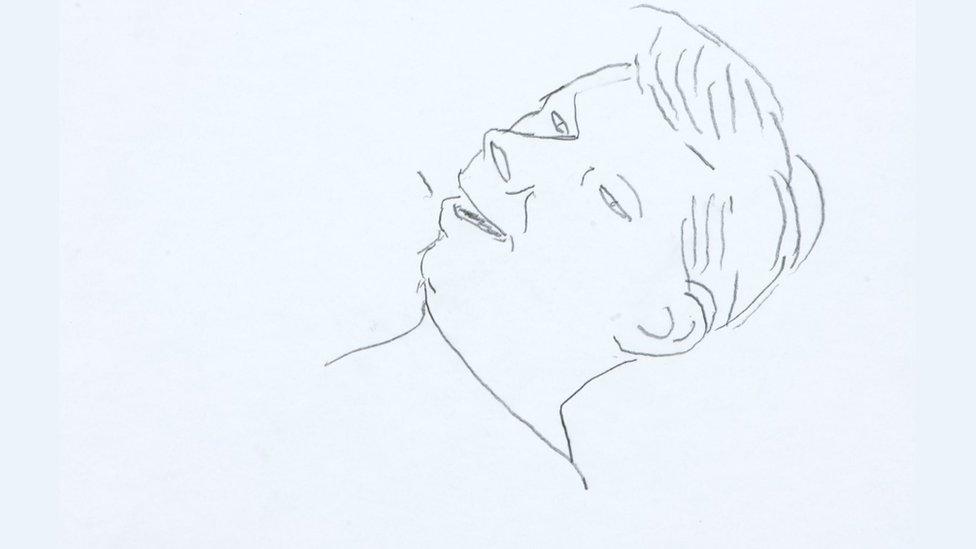
Norman did not complete his last sketch of Pat
Despite this, he says he was "staggered" when he found out his father had been drawing his mother.
"It meant that I had to come from behind my own easel to confront one of the most challenging times of my life," he says.
For the past year he has been presenting the sketches to professional academic audiences in North America as a way of widening the discussion about dementia and end-of-life care.
Mark says he would now like to extend that conversation to the general public.
"The next thing I am working towards is to actually get the work exhibited," he says.
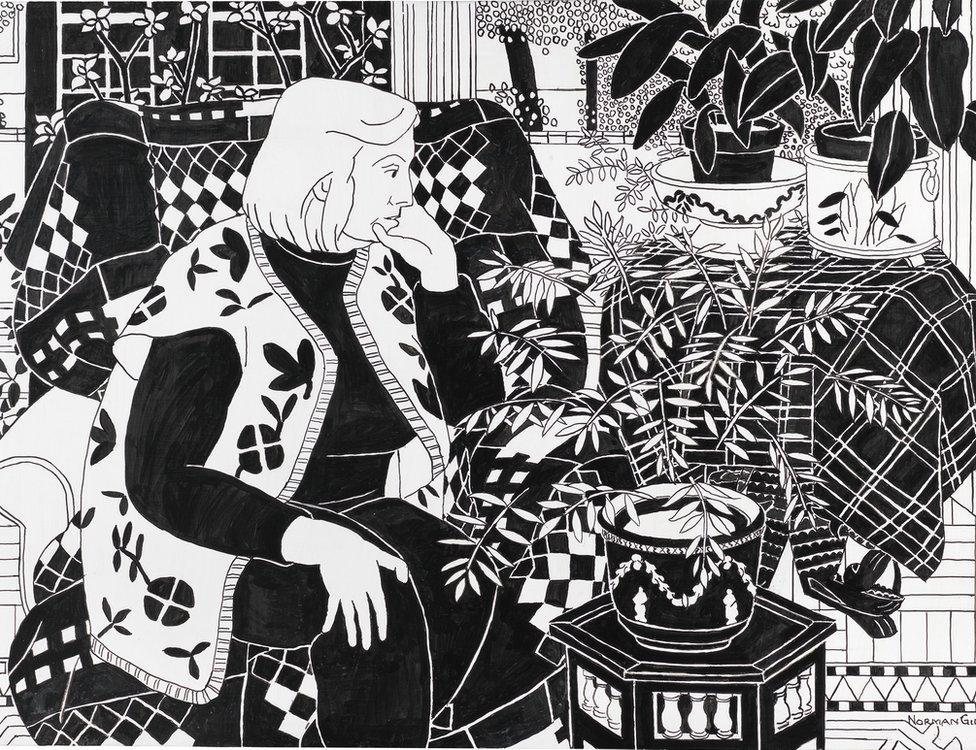
Norman works in India ink before he adds colour to his paintings
The latest exhibition of Norman's paintings, which opens at the Tatha gallery in Newport-on-Tay on Saturday,, external does not include the drawings of Pat.
The 24 paintings in the exhibition do include others of his family whom he says became his subjects because "they were there and willing".
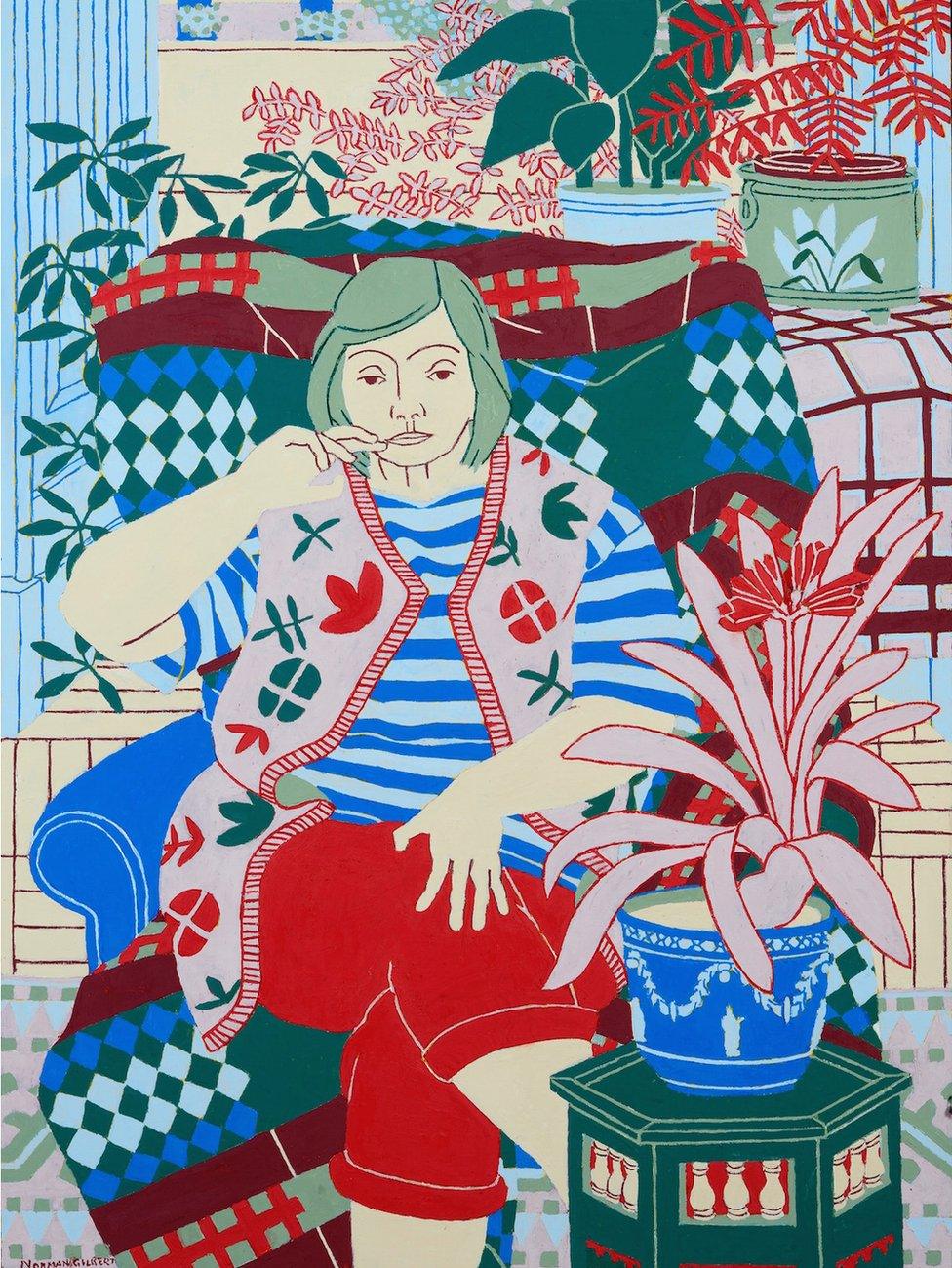
Norman says Pat liked to be immortalised in his paintings
He says his paintings now takes six to nine months to complete because he painstakingly calculates how they will be composed and uses black and white before he adds colour.
As for the drawing of Pat in hospital, he says his only regret was that he could not show them to her.
"Pat said she liked me painting the children because it gave them a sort of immortality," he says.
"I think I might be doing something like that with her if these drawings go on being used by people like Mark."
Passion, Vision and Spirit is at the Tatha Gallery in Newport-on-Tay, from 13 January., external
Artworks by Norman Gilbert